This is one in a series of posts on the Sony alpha 7 R Mark IV (aka a7RIV). You should be able to find all the posts about that camera in the Category List on the right sidebar, below the Articles widget. There’s a drop-down menu there that you can use to get to all the posts in this series; just look for “A7RIV”.
I recently shot an event with the a7RIV. It was a Halloween party for the horsey set. Costumes for the people. A few costumes for the horses. Spooky things popping up on trail rides. It was a sunny day with a lot of tree cover. Huge DR. I took the ar7IV and the Sony 70-200 mm f/4 lens. The usual event photographer would have used fill flash. I left the flash at home, and, to increase the degree of difficulty even more, I made myself process the images with no local controls. I’ll walk you through what I did.
This was a really tough one. We’ve got patches of bright sun on light clothes, and a face in deep, deep shadow because of the shade and the hat. We’ve got white clouds and sunlit foliage in the background. I set the ISO at 320, which is one of the a7RIV’s sweet spots, dialled in lots of minus exposure compensation, and tortured the file in Lightroom:
If we look at the raw histogram, you can see that I could have given it a stop more exposure:
The end result is not as good as it would have been had I used some fill, or even as good as I could have done with some local adjustments, but shows how malleable the a7RIV files are as long as you don’t blow the highlights.
Here’s another one:
I needed a lot of negative EC to keep from blowing out the highlights in the cheek, the hair, and the arm, but this one didn’t require quite as much in the way of extreme Lightroom moves:
The raw file shows a good exposure:
Here’s one that was pretty simple to manage because the highlights are all in the background, but the sunlight on the face required pulling the capture exposure quite a bit.
Exposure looks OK:
Here’s a costumed horse in a tricky lighting situation:
Behind me is deep forest, so there’s very little light filling in the shadows. and the sunlight on the face is very bright compared to the important parts of the rest of the field of view.
The exposure may have been a bit generous:
Here is a harsh sunlight situation with a bright foreground and a very dark background. I needed minus EC to keep the detail on the semi-specular reflections on the pumpkins, which don’t show up well on the Lightroom histogram below.
I could have given it some more exposure:
This one would have been easy except for the sunlight on the right side (camera left) of her face:
That could have used another half-stop of exposure:
The camera acquitted its just fine, and the is virtually no banding in spite of the extreme manipulations.
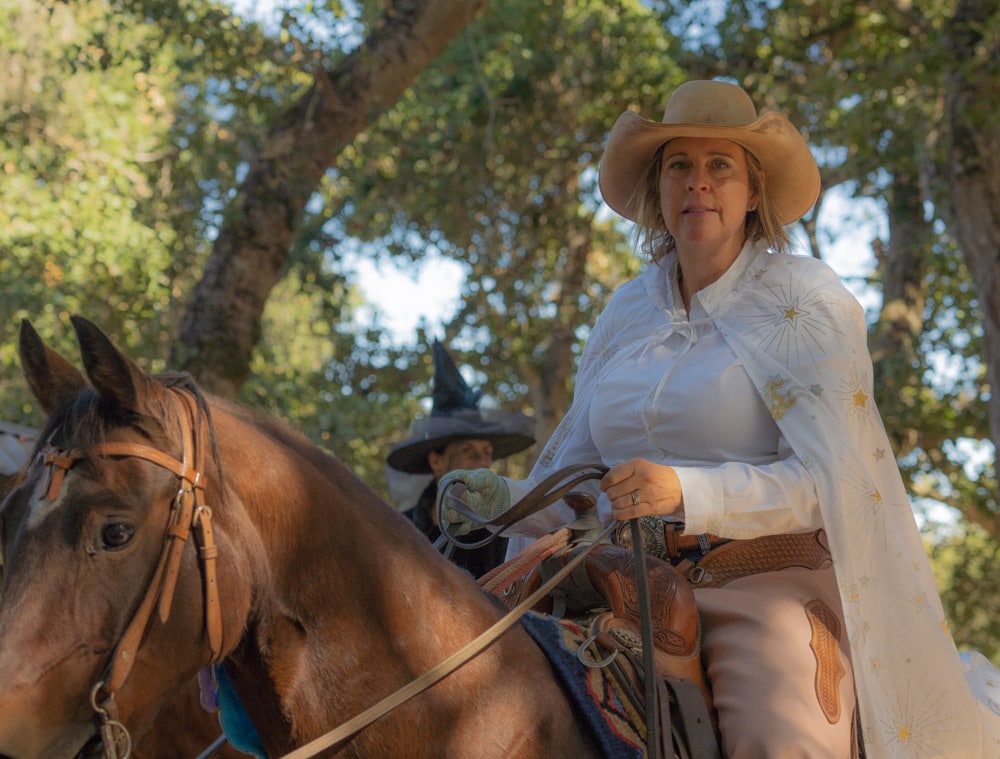
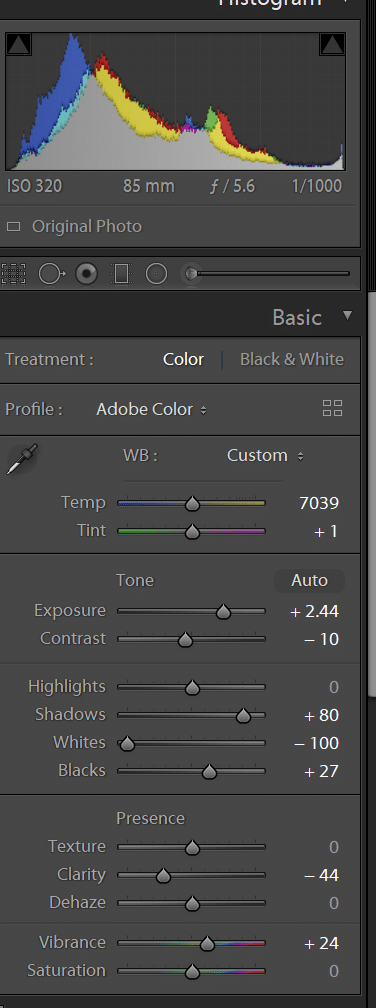
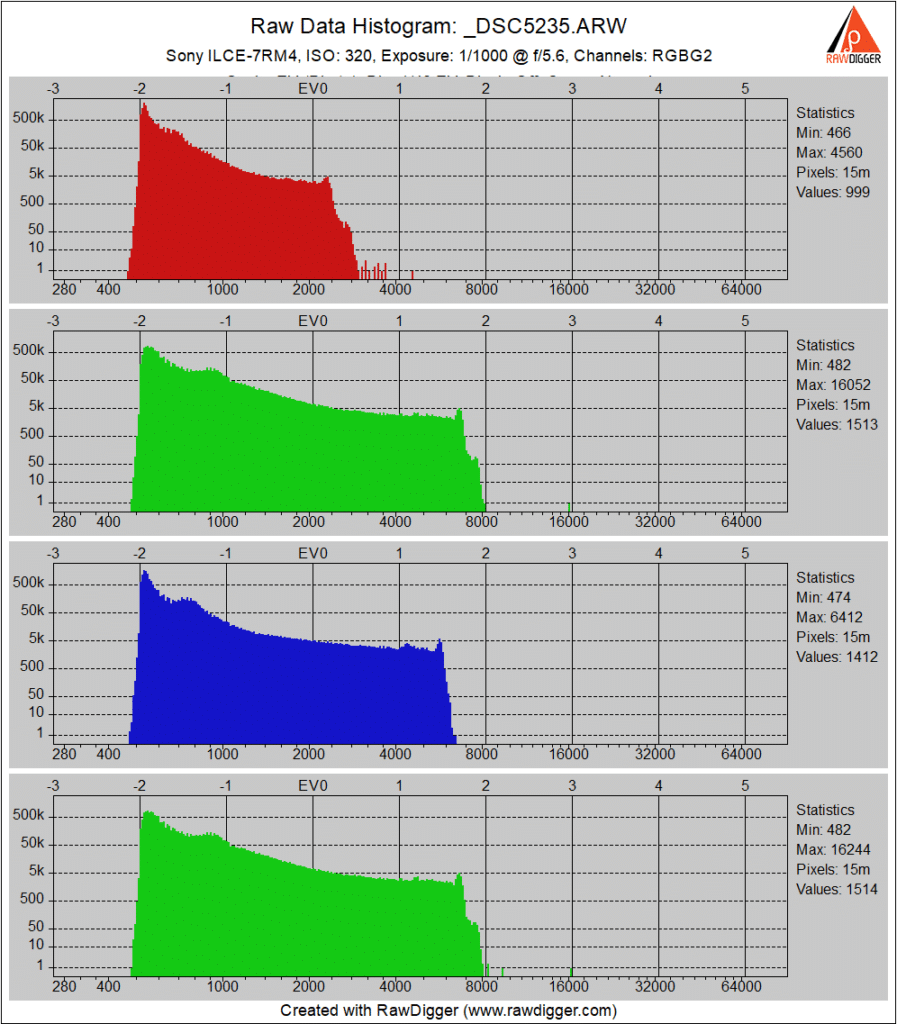
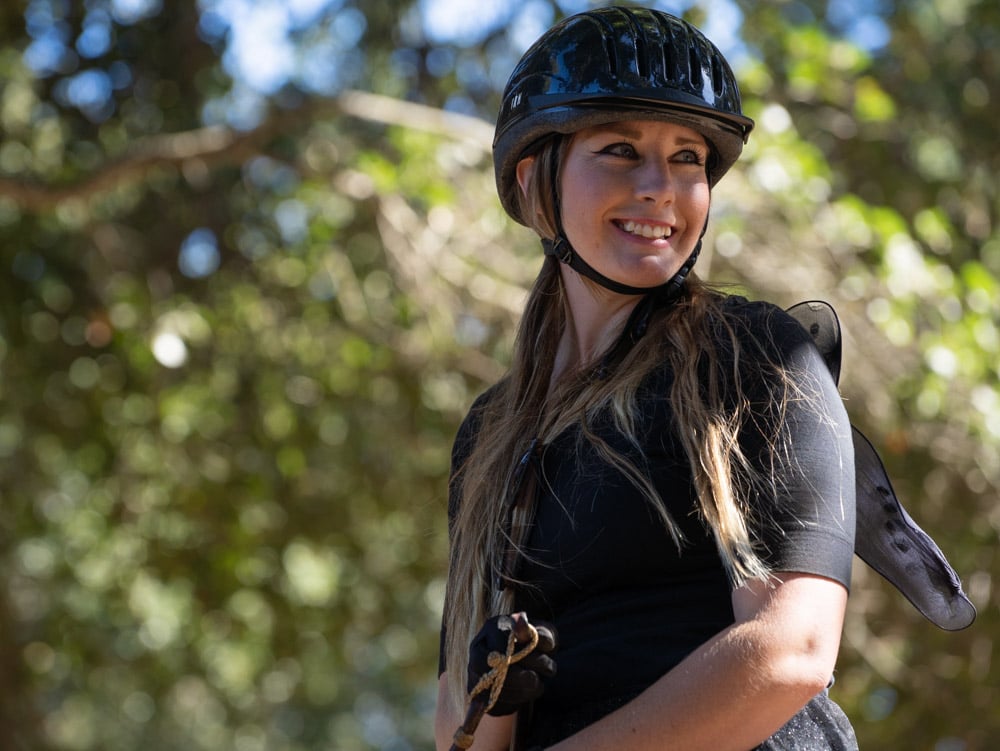
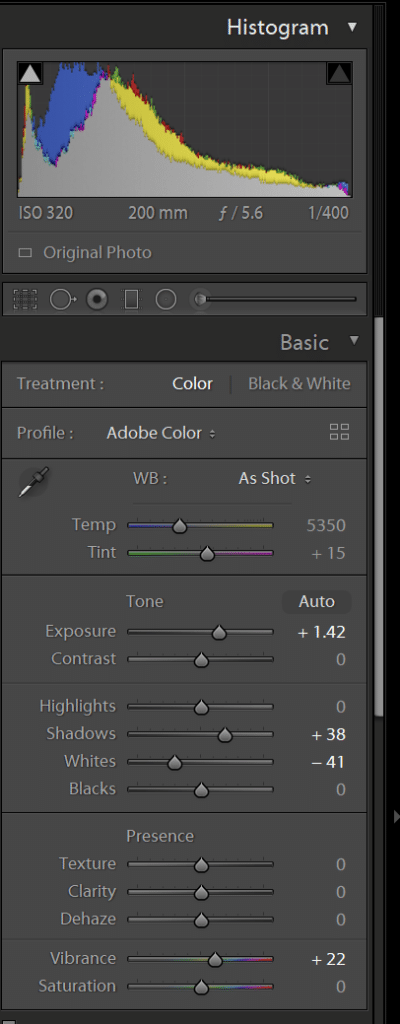
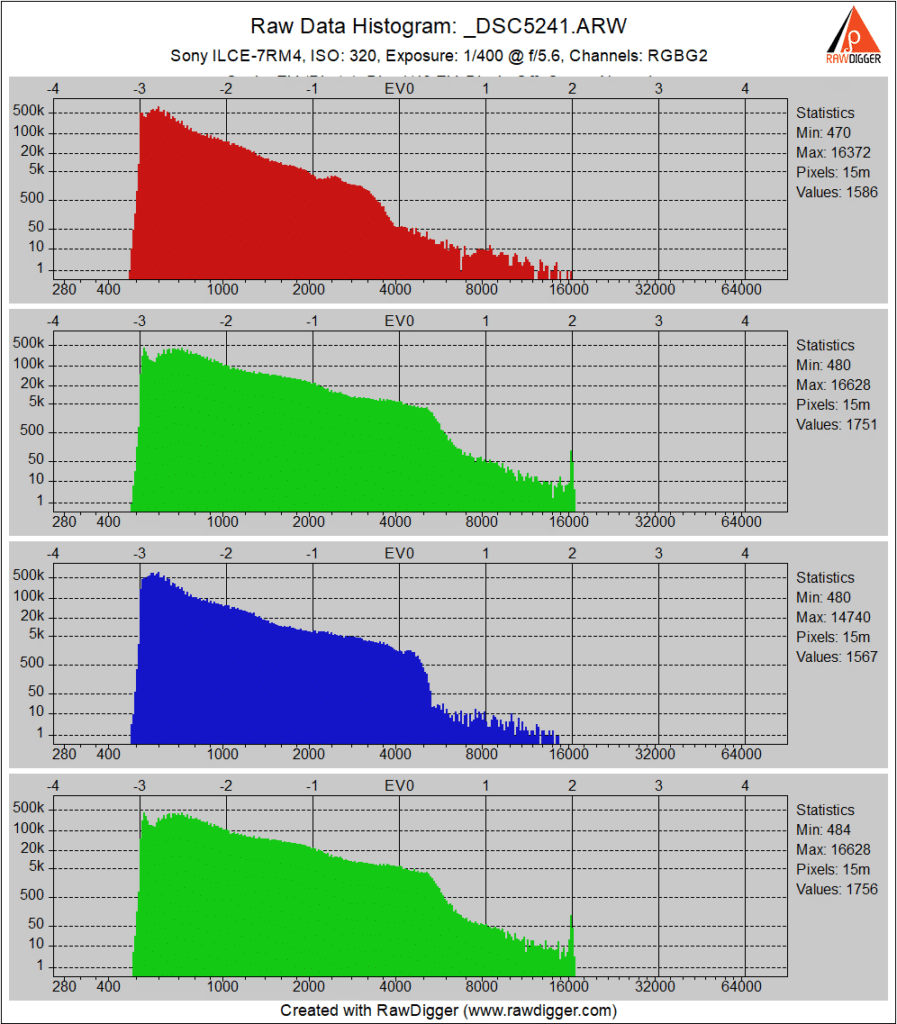
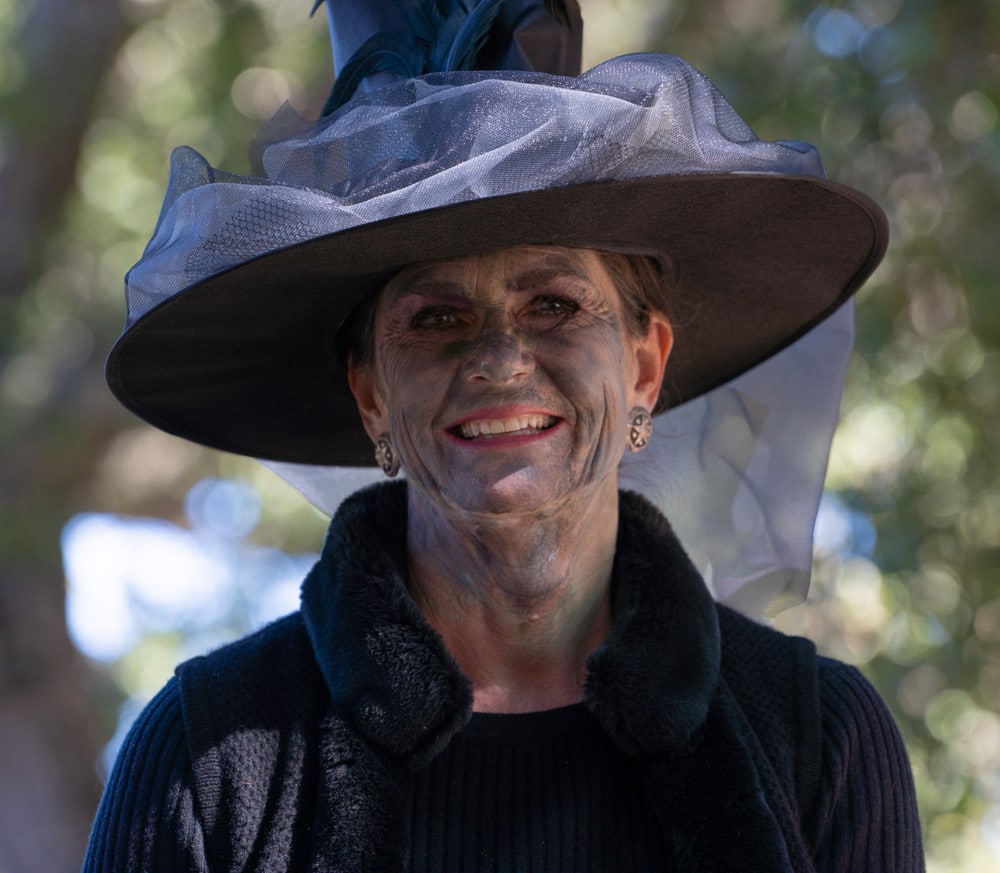
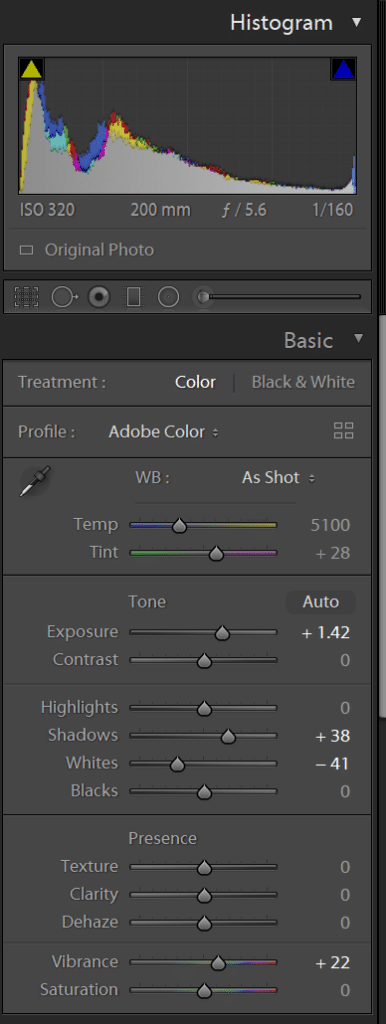
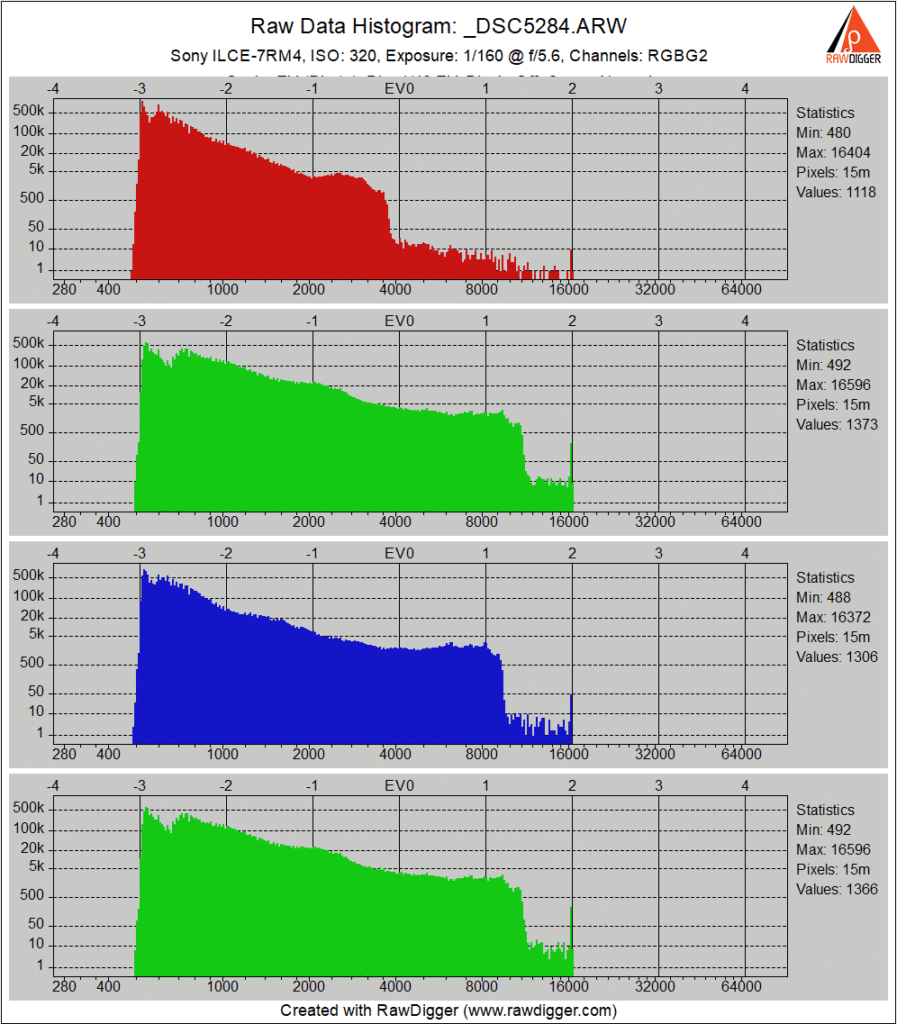
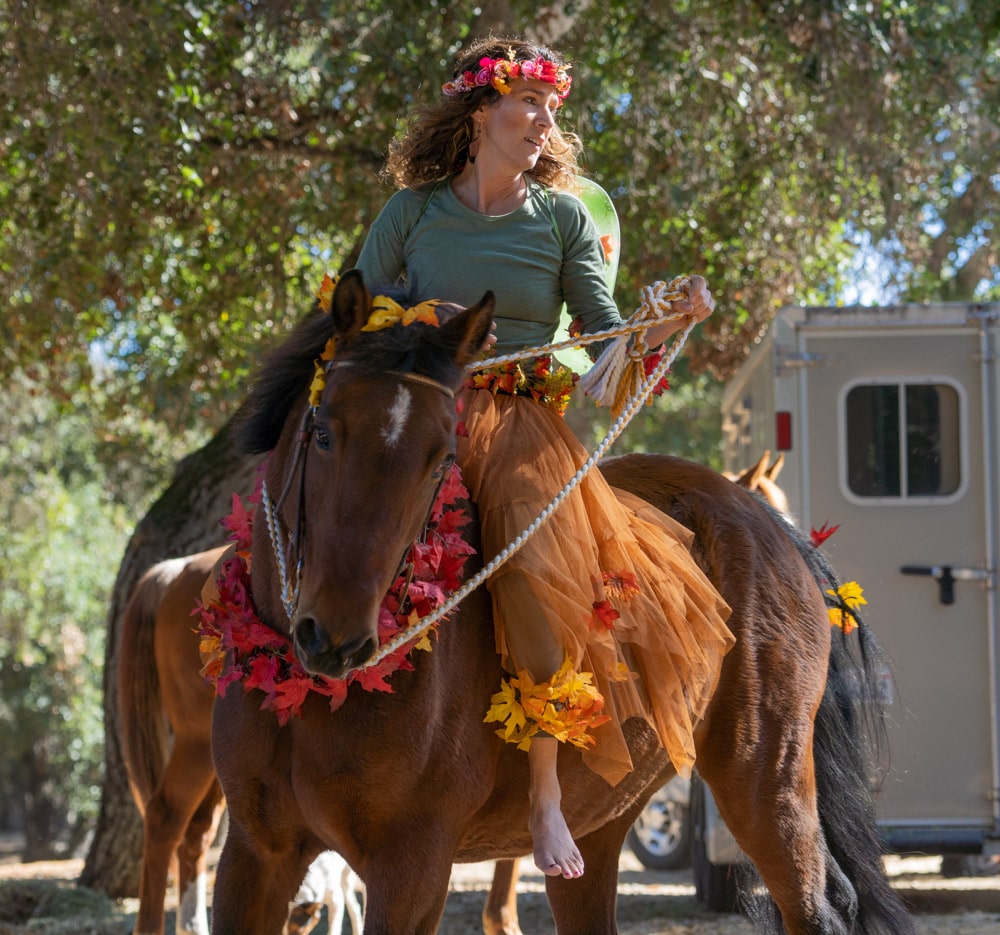
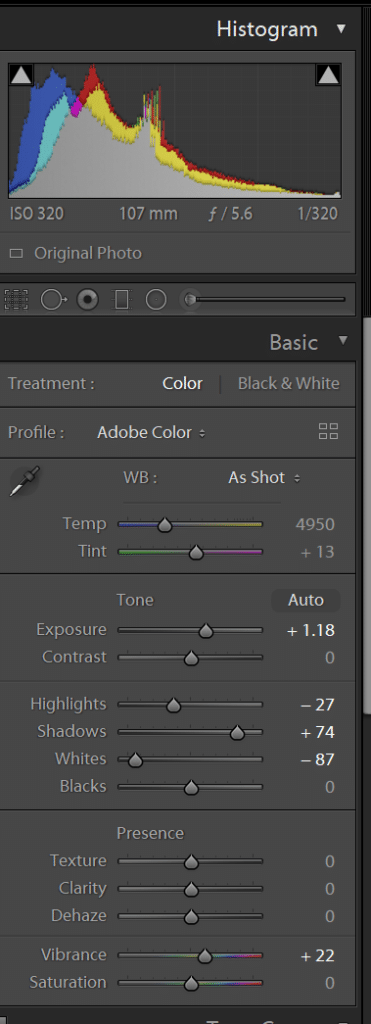
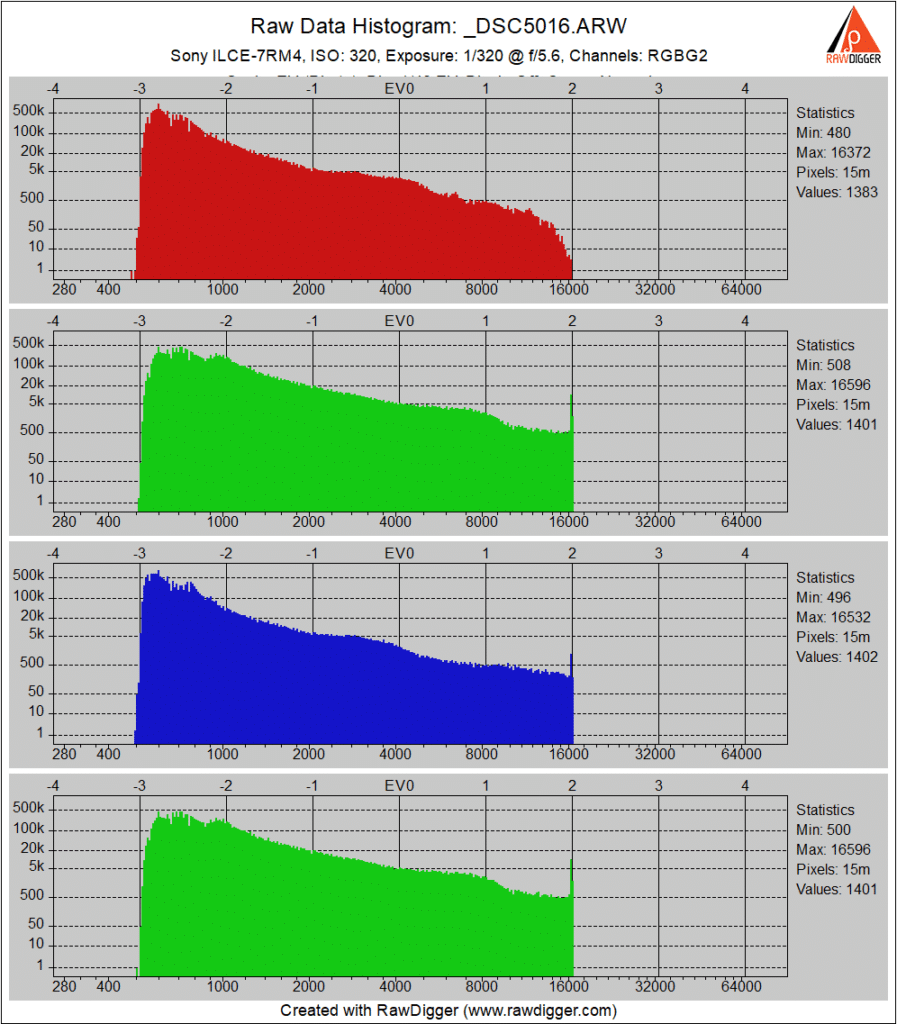
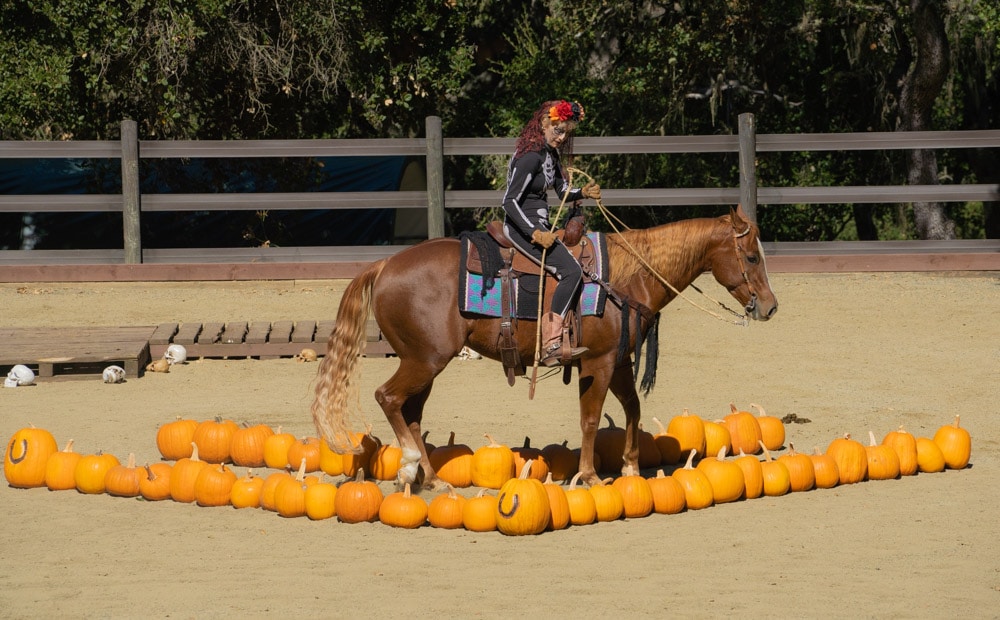
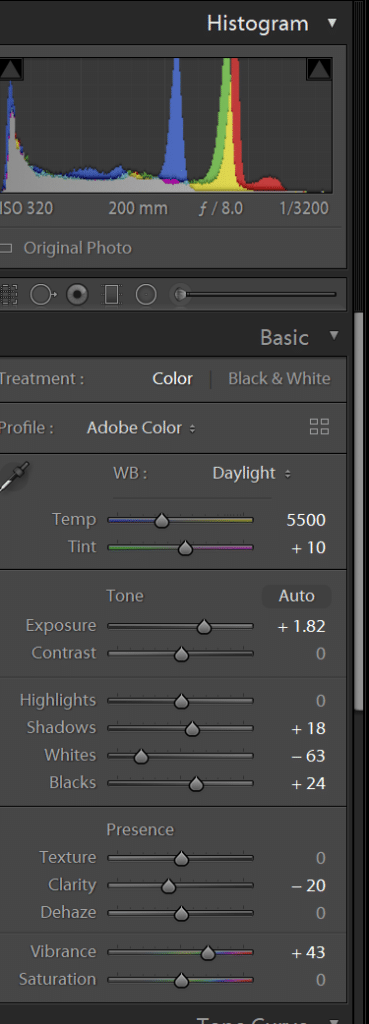
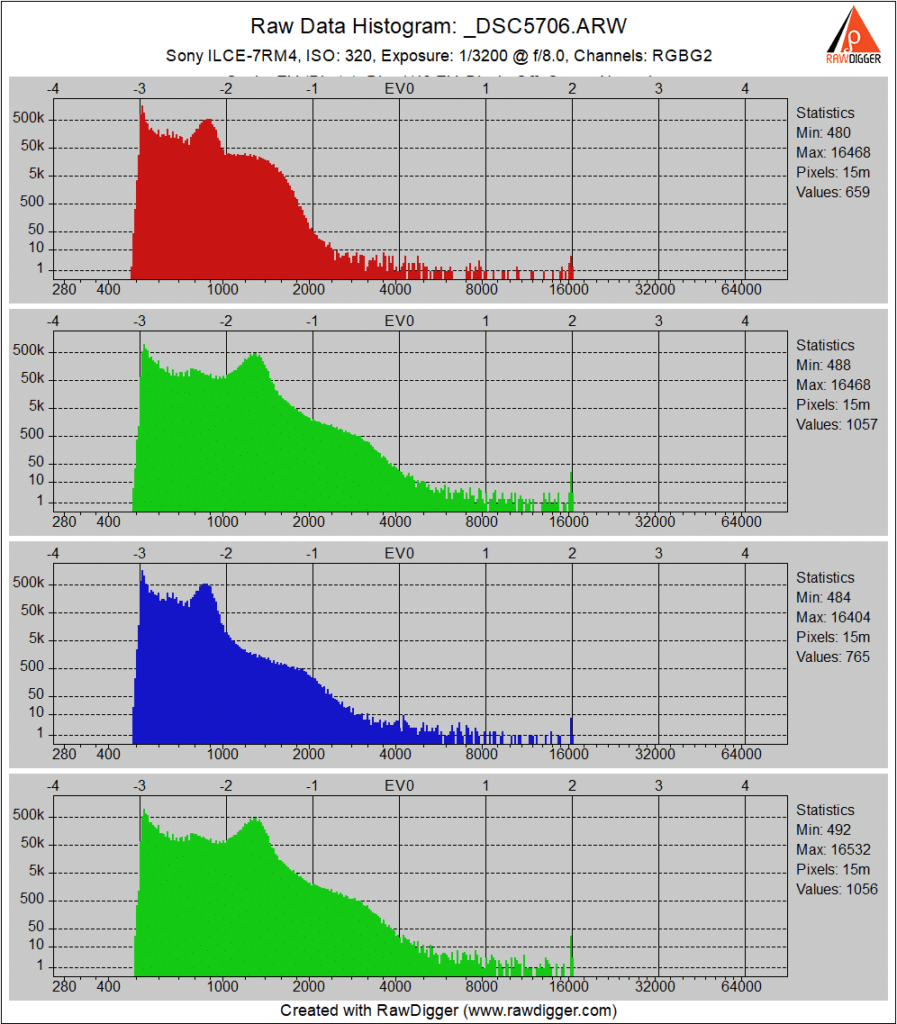
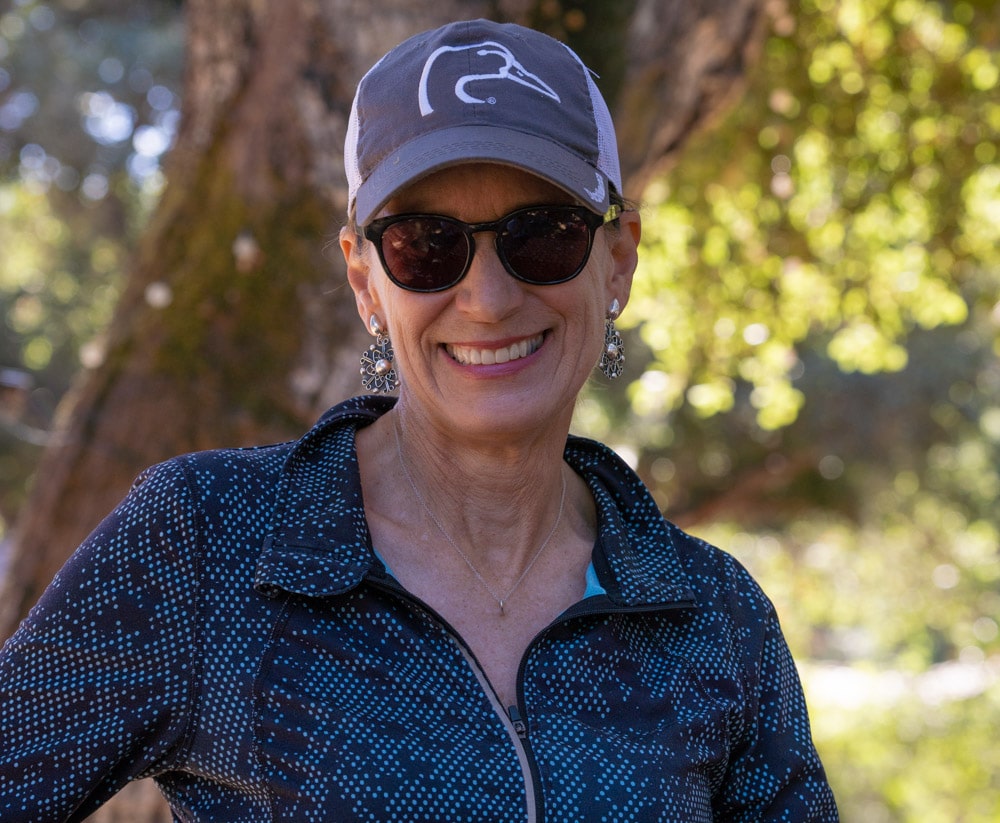
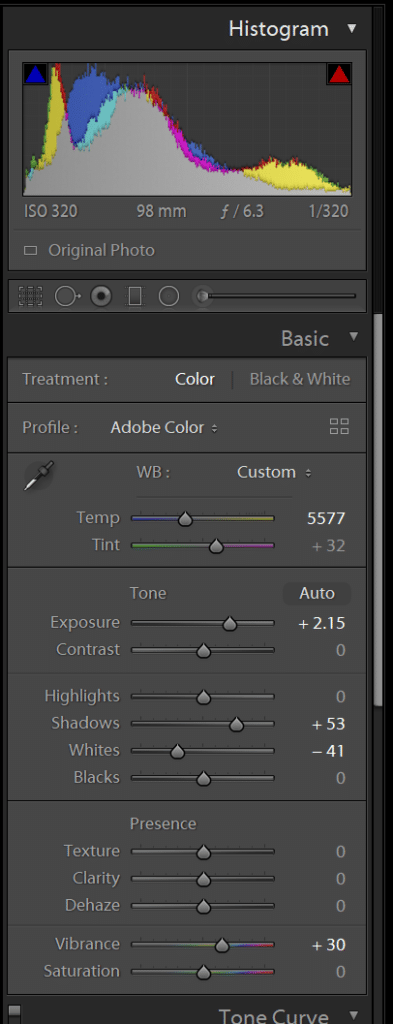
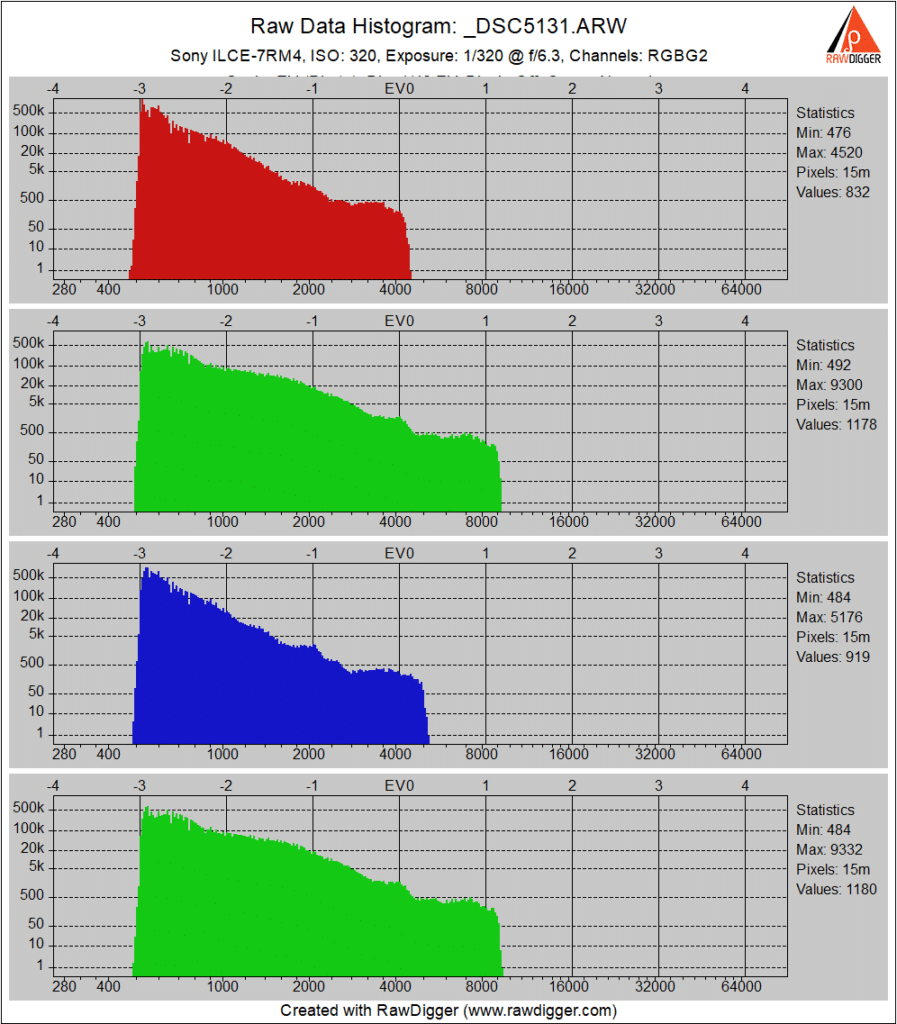
CarVac says
Are you checking raw histograms?
I’ve found that quite a lot of the time you have more DR than you realize at first hidden in the highlights, especially in the red and blue channels.
I do notice, however, that a lot of the brightest highlights you have are white, which means the green channel is probably nonetheless the limiting factor.
Den says
If you shoot with Creative Style set to Neutral -2 on contrast and set a custom zebra to 109 – you will find your RGB histogram is now very accurately showing the RAW clipping point (when you first see zebras stop pushing).
You will also gain a live view that shows you deep shadows – so you can have a good feel for the total lattitude of your RAW file exposure.
If you’re shooting RAW I strongly recommend this as your default setting together with EVF brightness set to -2 (closer to luminance of a print calibrated monitor).
Thanks
Den
JimK says
If you shoot with Creative Style set to Neutral -2 on contrast and set a custom zebra to 109 – you will find your RGB histogram is now very accurately showing the RAW clipping point (when you first see zebras stop pushing).
This is good advice except that it doesn’t deal with the white balance of the JPEG not being the same as the native white balance.
For that, see this:
https://blog.kasson.com/using-in-caera-histograms-for-ettr/
JimK says
I didn’t, but if you’re interested, I can take a look at the raw histograms. What you say about more the than appears at first blush is accurate, but note the Exposure pushes I’m giving thee image in Lightroom. The Lightroom Exposure control introduces a “shoulder” to the tone curve, and thus tends to make bright things white.
JimK says
I’ve added the raw histograms.
Den says
A small change I would have made to this approach would have been to set auto ISO at a range of 100 > 320 – just to get a bit more out of the DR if needed (shutter speed permitting of course).
FredD says
Just a small photographic technique question, me not being a photographer of horses: Jim, you mentioned in passing that “The usual event photographer would have used fill flash.” Would that in fact be usual procedure with horses? It seems to me inadvisable, because of a perhaps small but nevertheless real danger of spooking them.
JimK says
I’d never do it without clearing it with the riders. And, in fact, I’ve never used flash around horses myself. So my comment about the usual event photographer was probably wrong.
Zé De Boni says
Hi, Jim
I am not a scientist, just a photographer and printer. In this kind of situation (and even for more extreme cases) I follow the same approach as yours but usually go further in opening shadow details and reducing global contrast and then increasing local contrast with clarity, vibrance and texture. I believe that the first image shown here is suffering a bit (mostly in the woman’s face) from receiving a negative clarity control. Of course, some local manipulation can also enhance the expression of such images, which is like what we’ve done for decades with dodging / burning, but that may be a subject of apart from your DR analysis.
JimK says
You are correct. I tied one hand behind my back by saying to myself that I’d do no local editing for this images, mostly to make them easier to understand. They were fine for their intended purpose, but they could have been better had I used local controls.
Brian Chaszar says
Hi Jim —
I’m Brian, a Montana-based fairly amateur photographer. I’ve been shooting and processing for years, but just now starting to take on a few gigs to add some income potential to my work, if nothing else, to pay for the gear I seem to continue to acquire.
I’m currently shooting with a Sony a6300, and really wanting to move to FF, for many reasons, one of which is for wider FOV capacity for landscape work. I came across your website while deliberating (still on-going) between the Sony a7iii, a7Riii, and a7Riv. There is no clear answer, is there?
My questions from this article are these (and I apologize in advance if they are a bit basic per your usual conversations here:
1. Why do you use ISO 320 when you are seemingly not light limited? My understanding was that the lower the ISO the better the IQ, so my process was to stay at ISO 100 unless low light required an increase in ISO in order to maintain an acceptable shutter speed. In your images here, it seems you have plenty of wiggle room with SS, so curious why you didn’t drop ISO.
2. Kind of the same question with exposure compensation — why did you move to neg EC rather than simply adjust your exposure?
I appreciate your reply, as well as all of the valuable information you offer here. You are contributing to the learning process of many!
Cheers.
P.S. P.S. If there are already resources explaining these topics, feel free to simply direct me to those resources, rather than re-write the book
JimK says
If you can get close to ETTR at an acceptable shutter speed and f-stop, ISO 100 is the better choice. The Sony 70-200/4 is a bit soft wide open, and I like to keep the shutter speed faster than 1/(2*FL). ISO 320 is where the high conversion gain setting of the a7RIV kicks in.
When the light is shifting a lot, I prefer to let the camera adjust the exposure, and I control the bias of the exposure depending on the scene tonal values and the shutter speed I’m getting. There are lots of ways to do those adjustments, but with the a7x dedicated EC dial, that’s convenient for me.
JimK says
Here are some posts about the a7RIII. The a7RIV is similar, but the conversion gain changes at a different ISO setting.
https://blog.kasson.com/?s=a7riii+exposure+
info says
Beyond basic resolution, it seems the hype around the 15 stops of dynamic range and great low-light performance, despite the high megapixel count, was also accurate.